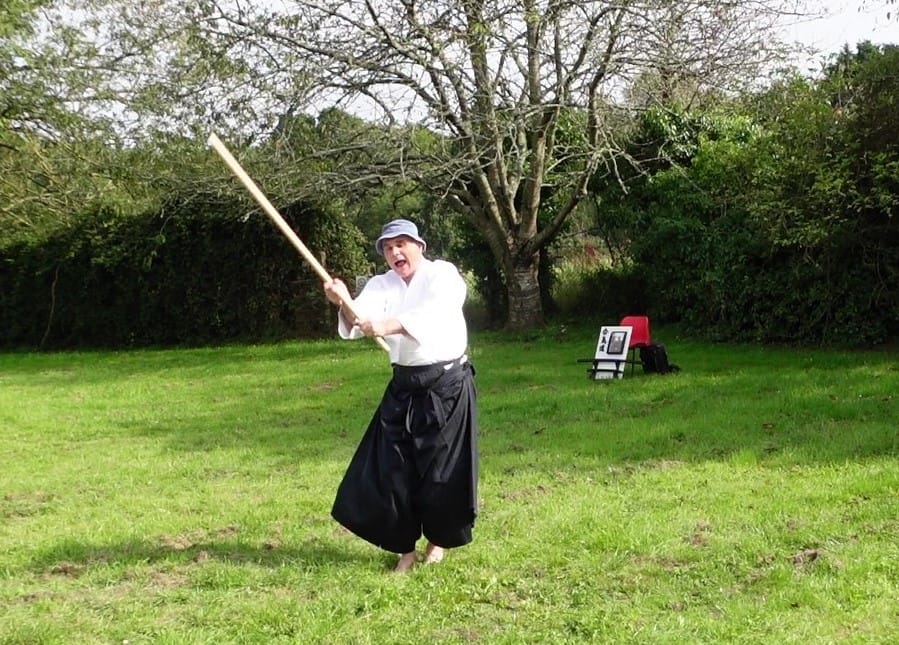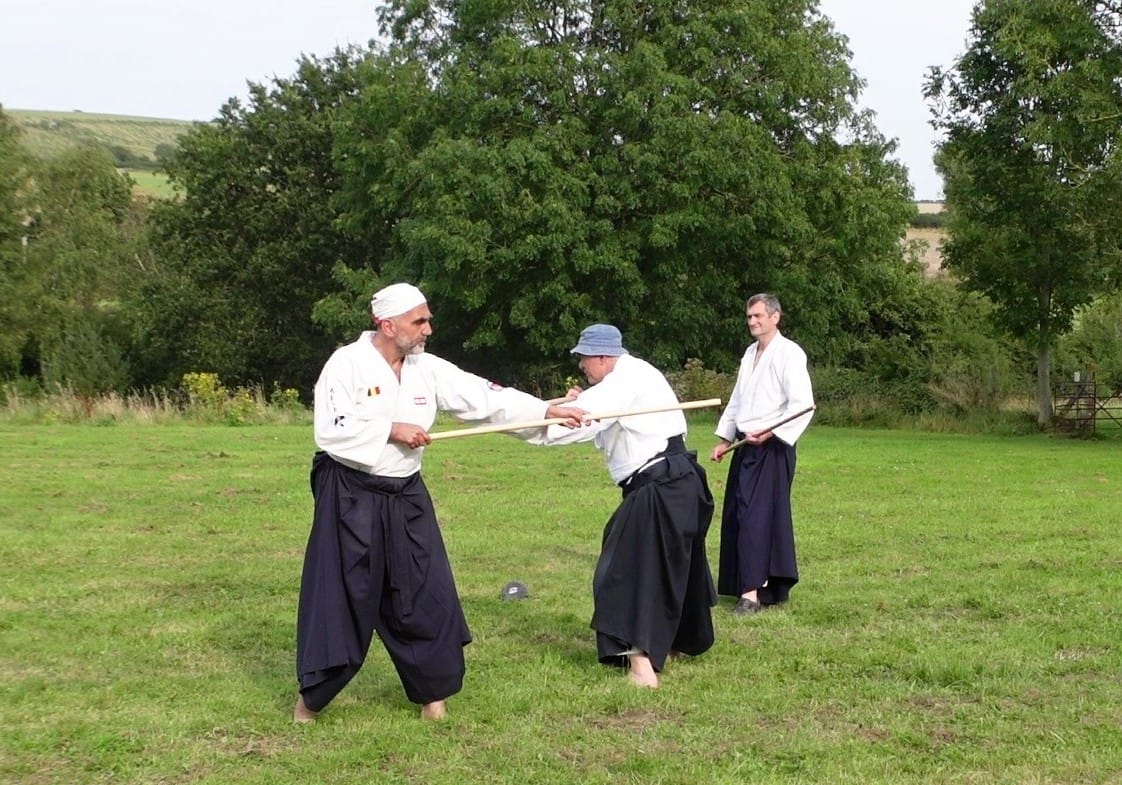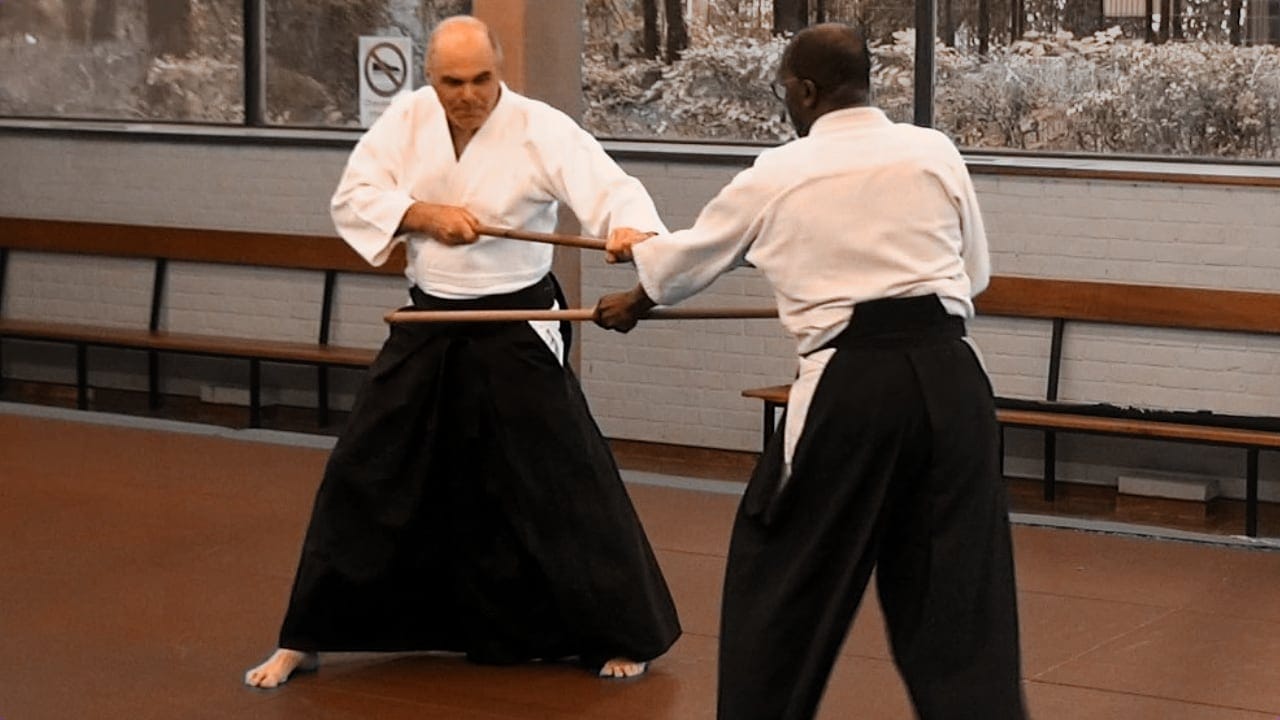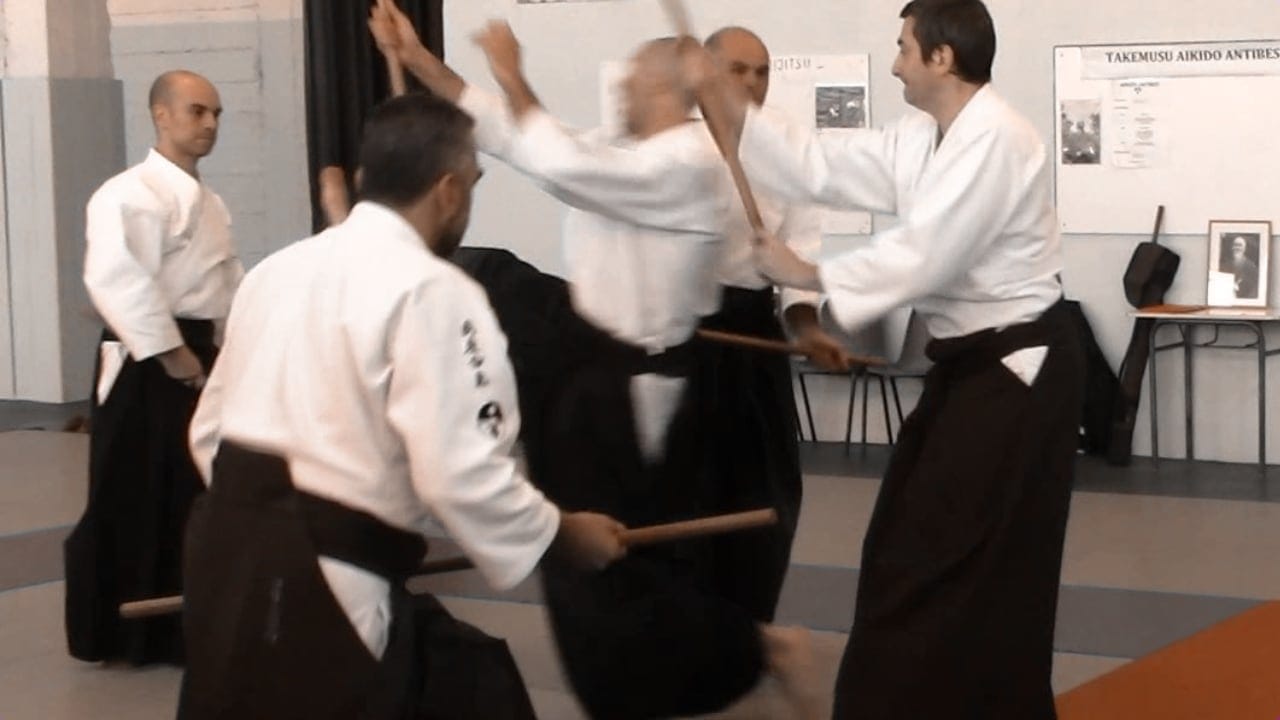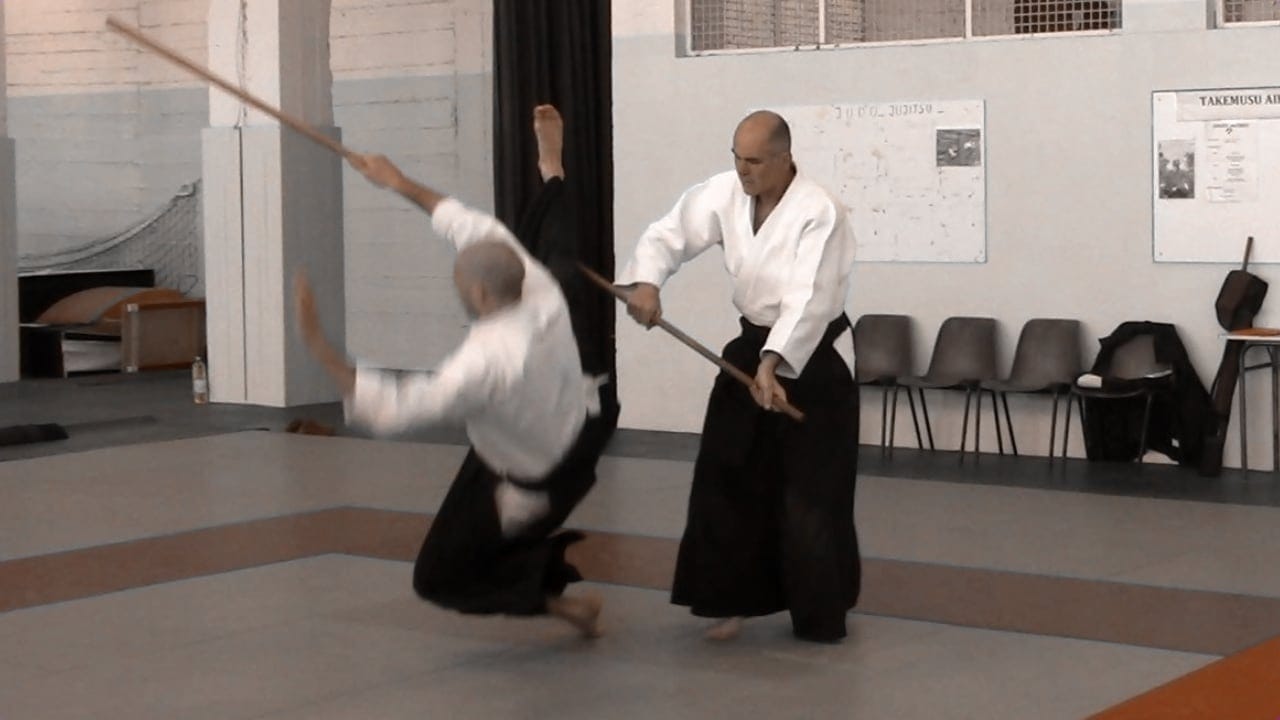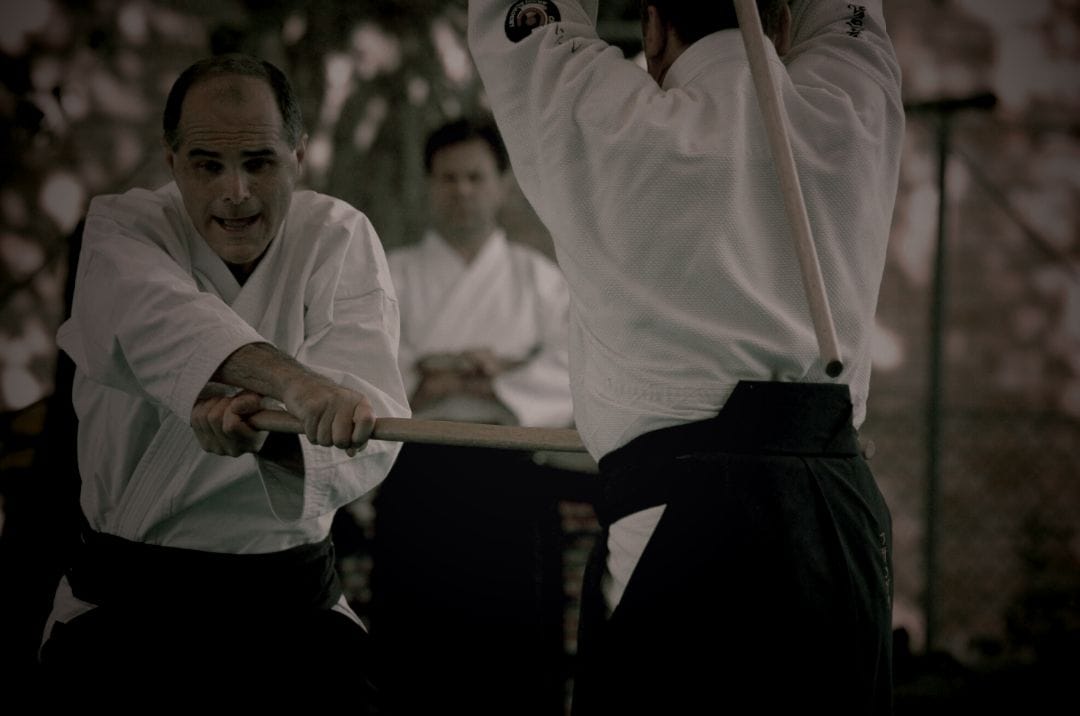It is natural to want to protect oneself, but Aikido is the art of protecting without protection.
This is absolutely essential: in the Aiki-jo movement called tsuki jodan gaeshi uchi, the jodan gaeshi time is not a protection time, it's an attack time.
The jo goes over the head, that is understood, but not to protect it: to rotate from left to right in the most effective way possible. The reason for carrying the jo above the head is that it is then placed in the extension of the spine, and this position at the top of the vertical axis of the body, in the very axis of the rotary engine of the movement, optimises the speed of rotation of the weapon. Losses of load and time due to off-centre positions and the resulting parasitic movements are cancelled out.
The video explains this:
The very name of this movement is an indication. It should be read as follows: tsuki - jodan gaeshi - uchi. It's clear then that there are two successive attacks: a tsuki strike and an uchi strike, and that between these two strikes there's a link, a dynamic, that allows you to go from one to the other in the shortest possible time and with the greatest possible power. The name of this dynamic link is jodan gaeshi which means - if translated word for word - to turn high, without any idea of protection. Between tsuki and uchi, therefore, we do nothing other than ‘turn high’, we protect nothing.
A logical proof of this can be found in the fact that at the very moment when the jo rises above the head, Master Saito's method insists on the importance of letting the back (right) hand slide until it makes contact with the front (left) hand. The aim of this is to engage the following rotation without losing any time. In fact, this is already the start of the rotation, and the jo held in this way with both hands at its centre, and in line with the vertical axis of the body, acquires great mobility. But this action would be completely inappropriate and would make no sense if the aim was to protect oneself under the jo. It is a demonstration that this is not about protection.
I would like to take advantage of this subject to say once again that the notion of protection is not to be found in any Aikido action, with or without weapon. It was O Sensei himself who gave this information in his book Budo (p. 35 of the English version), and in no uncertain terms: "The ancients used pillars and trees as shields, but that is a mistake. Nor should we rely on others for protection. Our spirit is the true shield."
Spirit here does not mean courage, or determination, or strength of character, all subjective and relative notions that do not guarantee the absolute victory, not even the ordinary victory. Spirit means the ability to harmonise with the forces of the universe, to unite with the spirit of the universe. And the only way to achieve this harmonisation is through movement, the right movement, the movement that is in accordance with the interplay of these forces, that is with them in unison in all circumstances, without opposition, without conflict, without ever fighting them.
We will find confirmation of the fact that it is indeed this movement that is fundamental - and therefore the shifting of the body - in the paragraph that O Sensei wrote immediately following his reflection. For in order to reach a resolution of the conflict, he gives nothing other than a description of the Aikido movement according to the four directions: "Truly enter, turn, and become one with your opponents, front and back, left and right".
To become one, that seems clear enough, and that is why the signs of duality such as parries and blocks, do not exist in Aikido, A man's only protection in extreme situations is his movement, which in this art is called irimi-tenkan (enter-turn). The control of such moments does not depend on the strength of the opposition, it depends on good management of the movement.
Tsuki jodan gaeshi uchi is no exception to this rule, and it is important not to replace the jodan gaeshi movement with a protection time, which is precisely a form of opposition.
Many teachers have not understood that the specificity of Aikido lies in the permanent movement. They wrongly place a protection here or there, and in so doing they stop the movement and thus link Aikido to martial art systems that the Founder spent his life explaining had nothing to do with his art.

